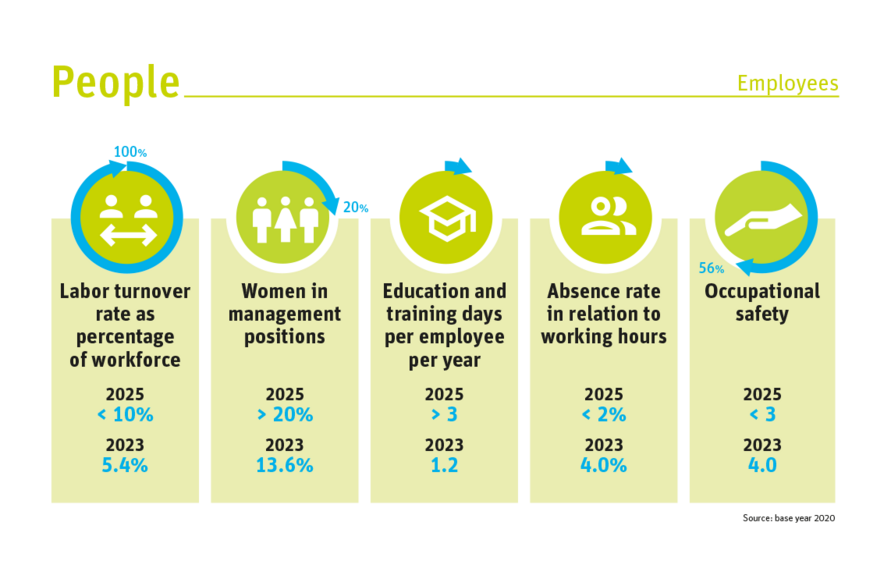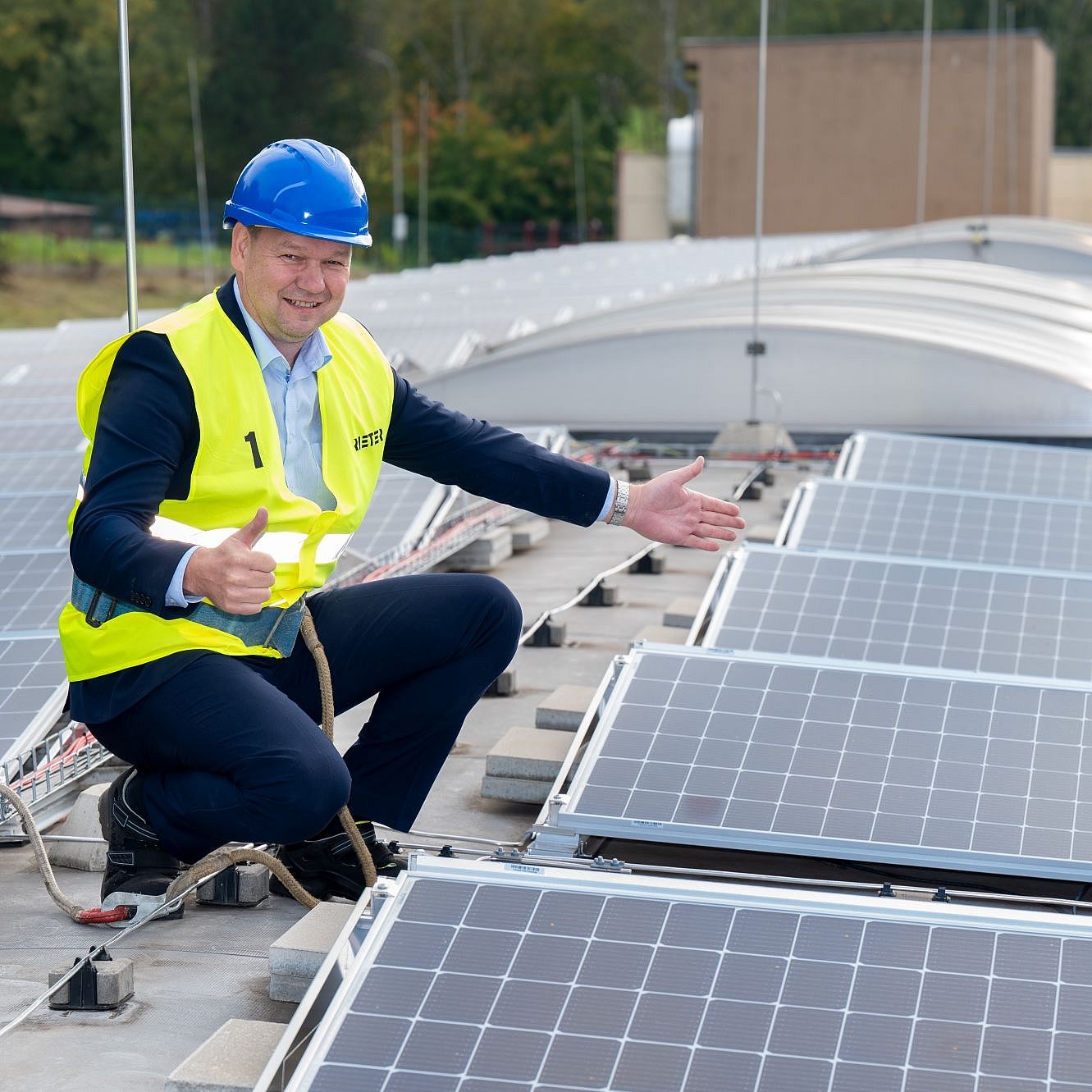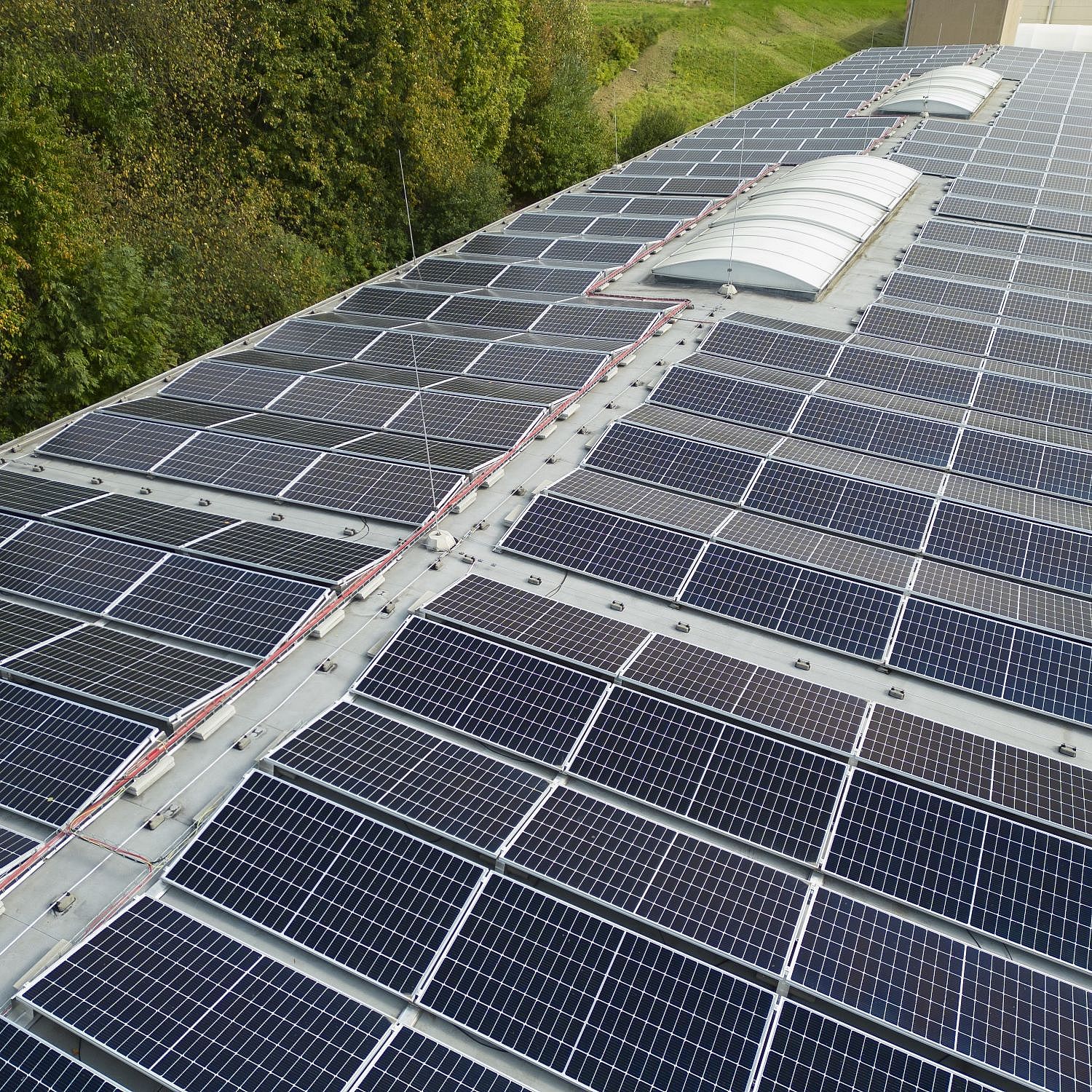Social Goals

In the area of social sustainability, Rieter made significant progress in 2023, particularly with regard to the representation of women in management and occupational health and safety positions.
From 2024, as a follow-up measure to the materiality assessment, new goals will be developed under the headings “Own workforce” and “Business conduct”. This means that Rieter will pay even greater attention to employee satisfaction.

Labor turnover rate
With regard to the labor turnover rate, Rieter is now focusing on those employees who leave the company voluntarily because they have found what they consider to be a better alternative. This will allow Rieter to better measure employee satisfaction and the strength of its corporate culture. The number of employees who voluntarily left Rieter in the year under review remained stable at around 5.4 percent, compared with around 5.1 percent in the previous year and around 5.2 percent in the base year 2020. This is well below the 2025 target of no more than ten percent. This is a clear indication that Rieter is an attractive employer and is successful in retaining key talent over the long term.
Taking into account voluntary and involuntary departures, the turnover rate was approximately 16 percent, reflecting the onetime effect of the “Next Level” program and other optimization measures. It was around ten percent in the previous year and twelve percent in the base year.
At the end of 2023, Rieter employed 5 081 people (full-time equivalents), compared with 5 629 in the previous year. The Rieter Group had 98 apprentices compared to 169 in the previous year. The reduction was primarily due to a realignment of the training approach in India, where employees are developed in a skills competence center. The number of apprentices in Switzerland fell only slightly from 57 to 54.
Responsibility for achieving the goals lies with the Human Resources department and Rieter’s managers. The Code of Conduct and the corporate mission statement set the direction.
Women in management positions
At the top management level, the proportion of women increased from around 12 percent in the previous year to around 13.6 percent, after it had also been around 12 percent in the base year 2020. This brings Rieter a step closer to its goal of increasing the proportion of women in management positions to more than 20 percent by 2025. Group Management had made achieving this goal a priority and launched the diversity initiative “Women@Rieter”.
Responsibility for achieving the goals lies with the Board of Directors, Group Executive Committee and Rieter’s managers. The policies are set out in the Code of Conduct and the corporate mission statement.
Training days per employee per year
The average number of annual training days per employee was 1.2, slightly below the previous year’s figure of 1.3 and the base year 2020 figure of 1.5. This means that, in the year under review, it remained below the target of at least three days per year. This is mainly due to the fact that the focus in 2023 was on processing the order backlog. At the end of 2023, the company launched an online learning platform that employees can use to further their own education.
Responsibility for achieving the goals lies with the Human Resources department. The framework conditions are set out in the corporate mission statement.
Absence rate
The absence rate increased slightly from around 3.7 percent in the previous year to around 4.0 percent in the year under review, which is still higher than the target of a maximum of two percent. In the base year 2020, it was around 3.8 percent. This is a reflection of the difficult market environment in which Rieter operates. The Human Resources department is responsible for achieving the targets, and the respective framework conditions are enshrined in the corporate mission statement.
Occupational health and safety
The absolute number of occupational accidents decreased to 44 in the year under review, compared to 50 in the previous year. As a result, the accident rate per million hours worked improved to around 4.0, compared with around 4.7 in 2022 and around 5.2 in the base year 2020. The number of serious accidents decreased significantly to 27, down from 36 in the previous year. A “serious” accident is defined as one in which the person or persons involved are absent for more than three days. Accidents are considered “minor” if they result in no more than three days absence from work. The number of accidents was 17, an increase of three over the previous year.
The improved accident rate is attributable to more intensive preventive measures and the implementation of targeted safety training at Rieter sites. Each accident is investigated in detail and recorded in a case analysis that includes corrective actions. The results are then communicated to all locations for implementation and adaptation. Monthly online meetings with all personnel responsible for occupational health and safety ensure a continuous exchange of knowledge. Rieter’s goal is to completely prevent accidents at work.
The Environment, Health and Safety (EHS) Committee, in conjunction with the Site Managers, is responsible for achieving the targets, which are set out in the Code of Conduct and the Safety, Health and Environmental Policy.
New targets
A survey of the company’s key stakeholders identified five new core issues. One is under the heading “Own workforce” and another is under “Business conduct”. These will be incorporated into the ongoing development of the 2024 Sustainability Strategy.
In 2024, one of the measures to be implemented is an employee survey that will enable the company to better take the pulse of its workforce and more effectively manage its efforts to be perceived as an attractive employer.





